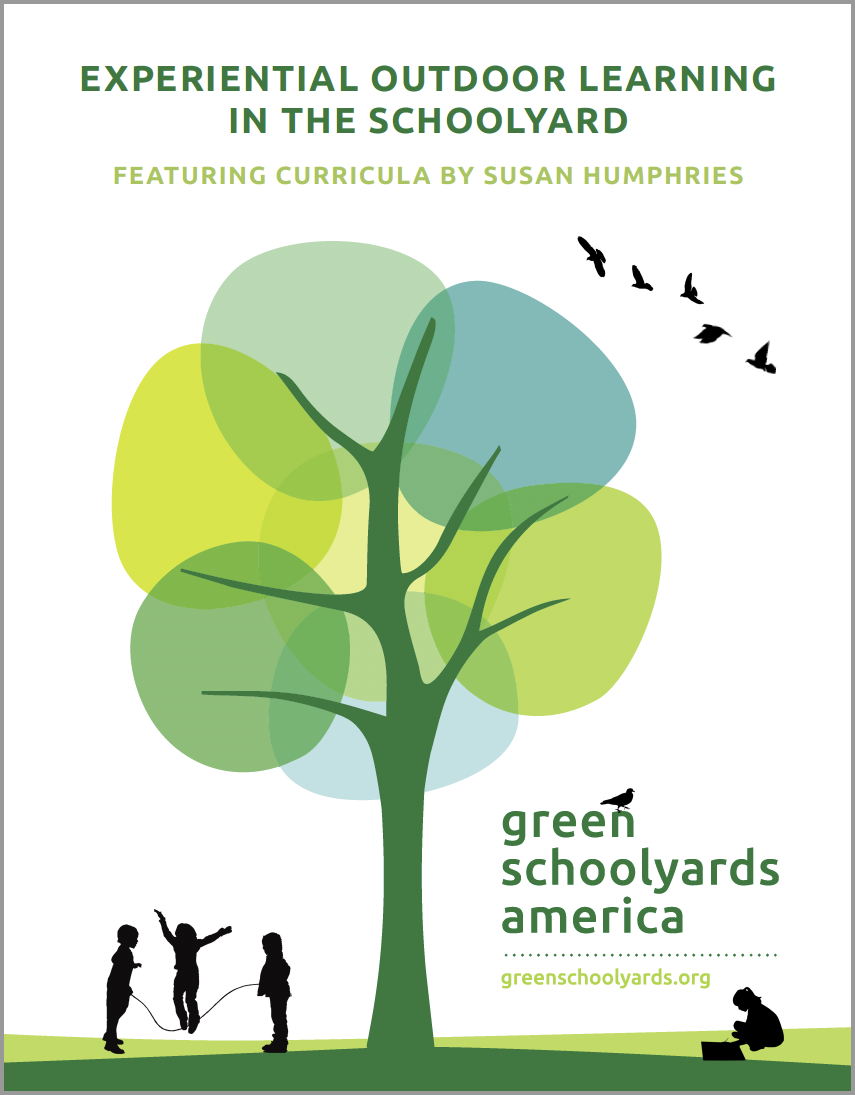Learning Takes Flight in Green Schoolyards
/Green Schoolyards America was honored to feature the work of our esteemed colleague, Susan Humphries, MBE, MA, at a two-day conference in the San Francisco Bay Area on September 27-28, 2019. Ms. Humphries traveled from England to share her expertise in teaching methods based on hands-on outdoor experiences and a deep understanding of both child development and the natural world. The conference included 12 hands-on workshops that explored Ms. Humphries educational philosophy and her amazingly creative, engaging curriculum ideas.
This article is the second in a series intended to share what we learned from Susan Humphries during her visit, and focuses on activities we explored that relate to birds and the magic of flight.
Properties of Feathers
Several workshops offered at the conference focused on the physical properties of feathers and the ways that they interact with the air to help birds fly. These hands-on curriculum lessons blended scientific investigation techniques with play and visual art in a manner designed to spark curiosity and hold students’ interest.
In one workshop, conference participants explored the structure of feathers by looking closely at a wide variety of small pin feathers, selected for their beautiful colors and patterns. Participants identified the central shaft (quill), parallel barbs, and smaller filaments (barbules) that “zip” together to create a flat, smooth surface on each feather, designed to catch the wind and help birds generate lift. They also deconstructed their feathers to understand more about them.
Another workshop examined the ways that feathers move in the air by trying a series of activities with different types of feathers and feather-filled pillows. Participants experimented with casting small amounts of tiny feathers into the air to watch the breeze carry them. Then, they worked with a partner to see if they could direct a single (small) feather’s flight, using air currents they generated with their breath or their hands. Next, participants tried balancing long peacock feathers in the palm of their hand, compensating for the light breeze blowing across the playground—as shown in the video below.
The workshop participants also experimented with the ways that feather-filled pillows interact with the air, by tossing a pillow to one another as they stood in a circle. The feathers inside the pillow slow its speed as it travels, and the pillow makes a nearly silent landing when it is caught or dropped.
Experiential History
Susan Humphries’s educational philosophy includes an experiential approach to teaching history. Many of her lessons make history come alive for children using hands-on experiences with ordinary aspects of life that were more common in past centuries. Two of our workshops explored this idea through our theme of birds and flight—while also providing windows into “cutting edge communications technology” of the past.
In one workshop, participants learned traditional writing techniques using a turkey quill. Each person trimmed their own quill to have a suitable writing point and then used their new feather pen with red and black ink to practice drawing pictures and writing text. Indelible inks and feathers like these were used to write important documents such as the Magna Carta and everything else—from bills of sale, to laws, and letters—in past centuries.
Homing pigeons were also one of the fastest ways to send a message over long distances in the centuries before planes, trains, automobiles, telephones, and computers. When they traveled, people would bring pigeons from their coop at home with them on their journey, and then release them with tiny messages tied to their legs when they reached their destination or had another important idea to communicate with friends, family, and colleagues.
At the end of the first day of our conference, we were grateful to have pigeon expert Bill Milestone join us with a delightful flock of pigeons he raises at his home in San Francisco. After teaching us about his pigeons, conference attendees released them so that they could fly back home, across San Francisco Bay.
Releasing pigeons with children at their school presents a wide range of potential curriculum ties including:
geography lessons, tracing the start and end points of the pigeons’ journey
the history of communication technology
flight aerodynamics
biological homing mechanisms of birds
animal husbandry and training techniques
Releasing pigeons also presents opportunities to teach empathy and spark wonder, while having an enjoyable experience in a very memorable way. The video below shares the magical moment of our pigeon release at the conference.
Pigeons and doves in art
As Susan Humphries tells us, "The affinity between people and birds goes back centuries and still resonates today. Pigeons and doves, in particular, appear in artwork across cultures around the world, in both secular and religious contexts.”
In our workshop activity on this theme, participants explored the ways that pigeons and doves have been represented in art, and then tried their hands at making their own artwork that included birds. During the workshop they drew large scale, colorful chalk pictures of birds on the schoolyard’s asphalt, and wove peace doves into the chainlink fence using strips of cloth.
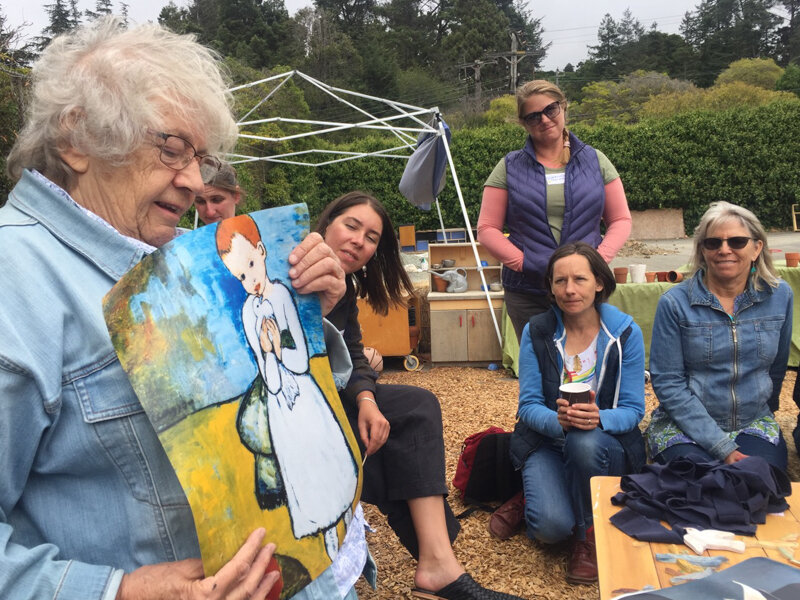
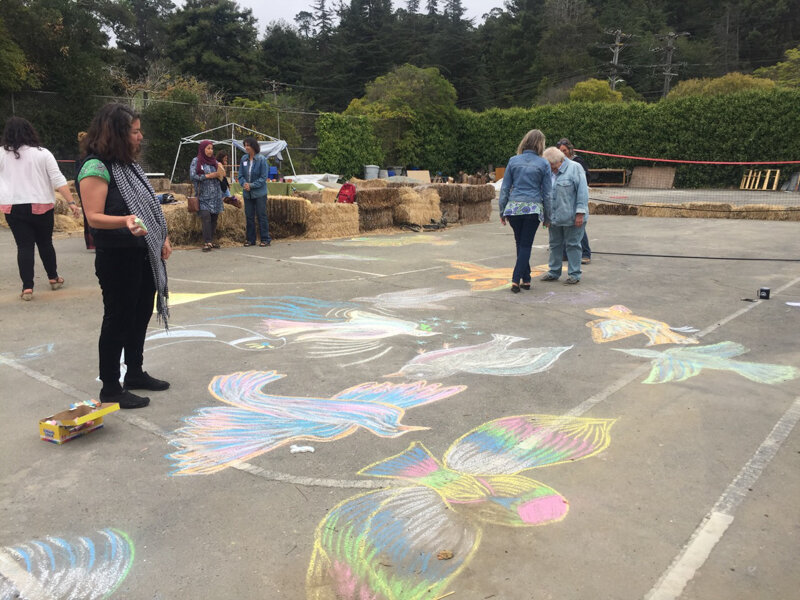
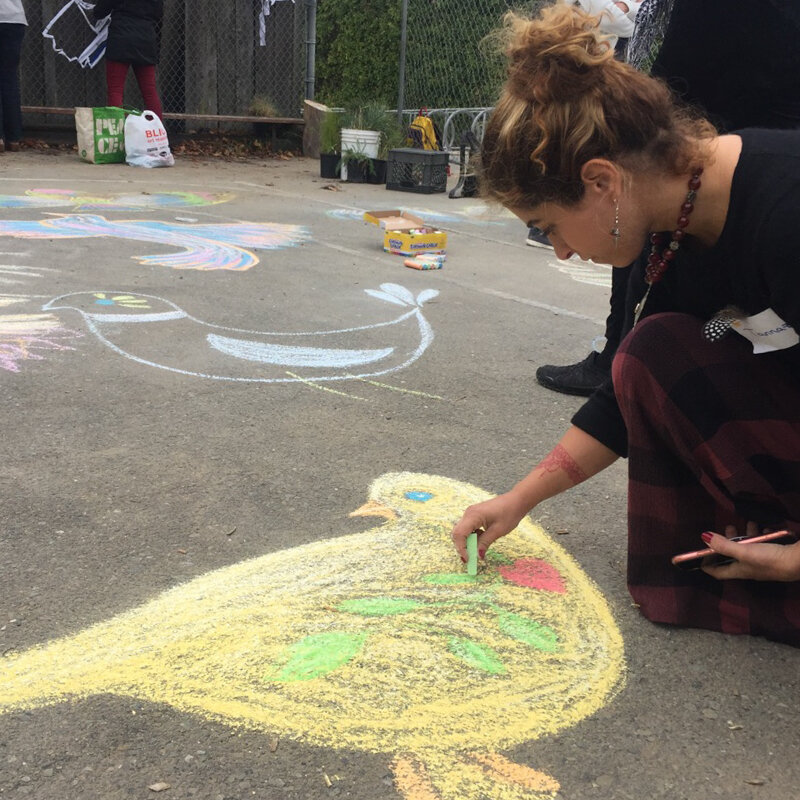


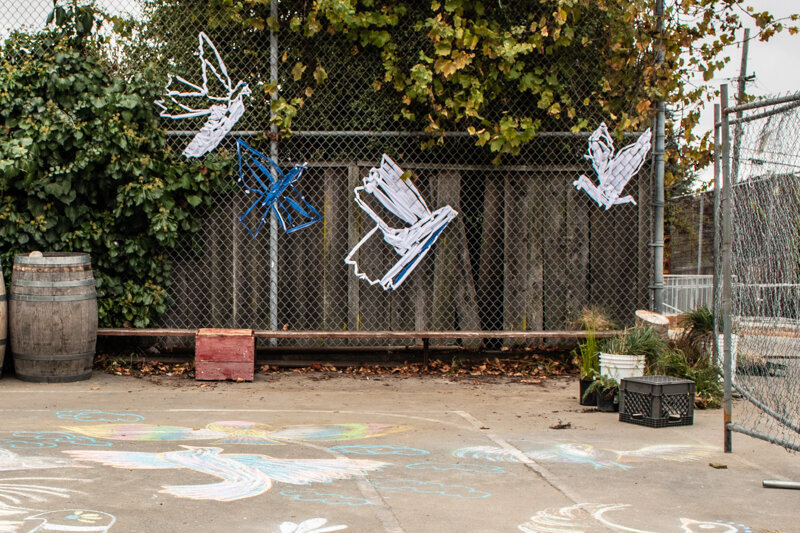
Photos above by Shirl Buss and Green Schoolyards America
We hope that this interdisciplinary exploration of birds will inspire you to try some of these lessons at your own local school. Please send us photos to share your work!
Detailed descriptions of each of the workshops described in this article are included in a free online book Green Schoolyards America created with Susan Humphries entitled, Experiential Outdoor Learning in the Schoolyard. Please visit our schoolyard activity webpage to download your own copy.
For detailed directions about how to implement the bird-related lessons described above, please see pages 6, 7, 10, and 17 of this new publication.










